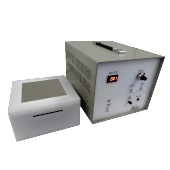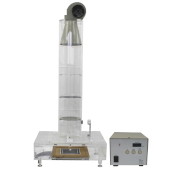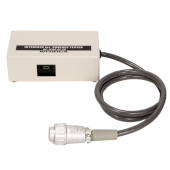

The sensation of coldness or warmth when skin touches a fabric is referred to as the “coldness and warmth feeling.” The feeling of coldness or warmth will vary depending on the amount of heat transferred from the skin to the fabric. This device measures that feeling by evaluating the “qmax” value (peak heat flux).
Test standard:
JIS L 1927 Textiles-Measurement method of cool touch feeling property
GB/T 35263-2017 Textiles-Testing and evaluation for cool sensation at contact instant
CNS15687, L3272 Method of test for the instantaneous cool sensation fabrics
The KES-F7 Thermo Labo can be used to evaluate such products as bedding material meant to offer a feeling of coldness in summer, and underwear material meant to offer contact warmth in winter.
The load and contact area of the KES-F7’s heat plate, which is brought into contact with the target sample, is designed to imitate the sensation of touching an object by hand, allowing for more realistic measurements of maximum heat transfer amounts.
Thermal conductivity:
With constant thermal conductivity measurement, the ease at which heat is transmitted from a heat plate with a constant temperature (30℃) through a sample to a heat plate with a separate constant temperature (20℃).
Heat retention properties (optional accessory):
The sample is set on a heat plate with a constant temperature (room temperature +10℃) and is left in contact with the air. A constant wind is then applied continuously to the sample surface. The amount of heat lost through the sample is then measured in order to calculate the heat retention rate (%). Measuring methods include a dry method that assumes direct contact is made with dry skin or clothing and a wet method that assumes contact is made with sweaty skin or clothing.


This compact cooling base allows for constant control of the base temperature of a measurement sample. Temperatures are kept constant electrically to prevent temperature variations and ensure good thermal properties in the measurement data.

Optional unit for heat retention property measurement.

Connecting this device to the instrument and to a PC allows the waveforms and numerical values of measurement data to be output.
Obtained data can be saved as BIN data or CSV data.
| Model, Product Name |
KES-F7 Thermo Labo |
| Dimensions (W × D × H) *approx. | Thermo Labo: 230 × 360 × 80 mm Amplifier: 180 × 400 × 400 mm Thermo Cool: 180 × 180 × 110 mm Thermo Cool Amplifier: 230 × 310 × 220 mm Wind Tunnel Unit (optional): 460 × 320 × 1100 mm Wind Tunnel Amplifier (optional): 125 × 200 × 100 mm |
| Weight *approx. | Thermo Labo: 3 kg Amplifier: 15 kg Thermo Cool: 2.5 kg Thermo Cool Amplifier: 5 kg Wind Tunnel Unit (optional): 7 kg Wind Tunnel Amplifier (optional): 1.3 kg |
| Power supply, Frequency | 100VAC, 50/60Hz |
| Interface | USBADPU (optional) PC (optional) *1 Data logger output terminal |
| OS | Windows 7/8/8.1/10 |
| Sample size | 180 × 180 mm (standard) Thickness: 2 mm (max.) |
| *Thermo Labo (qmax/thermal conductivity measurement unit): with BT-box and T-box set on base plate *Thermo Cool is included. Heat Retention Measuring Unit (Wind Tunnel Unit, Wind Tunnel Amplifier) is optional accessory. |
|
| *1 PC is not included. We are able to prepare for PC with an appropriate specification. |
KES (Kawabata Evaluation System)
The Kawabata Evaluation System, centered on Sueo Kawabata, a professor at Kyoto University, and Masako Niwa, a professor at Nara Women’s University, is an objective evaluation method for measuring the texture of clothing fabrics based on the “The Standardization and Analysis of Hand Evaluation” provided by the Hand Evaluation and Standardization Committee of the Textile Machinery Society of Japan.
We offer free sampling services, "for a deeper understanding of our products", "for confirming the measured data that can be obtained", and "to prepare the data necessary for submission of internal approval documents". Please feel free to contact us.